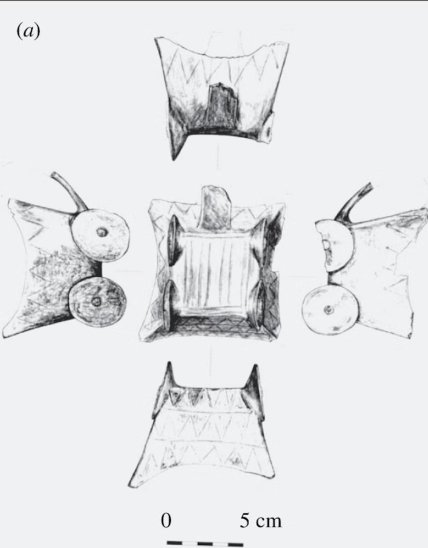The first wheel may have originated in the Carpathians, designed for a specific purpose.
It's hard to imagine what life would be like for humans if the wheel had never been invented. This device sparked a true revolution around 6000 years ago, and it’s likely that the earliest to recognize its advantages were the copper miners in the Carpathians.
There are ample reasons to believe that local tribes were compelled to roll carts when they needed to descend into increasingly deeper mines. A new study has been published in the Royal Society Open Science.
Currently, there are three main theories regarding the origin of the wheel — in Mesopotamia, on the northern coast of Turkey, and in the Carpathians. The European theory of the invention's origin was proposed in 2016, and the new research may provide further arguments in its favor.
In their work, the scientists employed structural analysis methods and attempted to explain how the wheel came into existence. They divided this process into several stages:
- the use of free rollers that reduced friction when moving a heavy box but required constant repositioning;
- the use of grooves in the roller, which increased friction but eliminated the need for constant repositioning;
- the emergence of an axle with wheels;
- the separation of the axle from the wheels, occurring about 500 years after the wheel itself was invented.

The researchers discovered that the optimal design would be the third option, where the wheel and axle are inseparable. However, due to various problems faced by ancient people, such as turning, they ultimately arrived at the necessity of creating a wheel that rotates separately from the axle.
Thus, the authors of the study suggest that the invention of the wheel was not the result of a single person's insight but rather evolved over a long period of technological development of that era.
They also support the theory that the wheel emerged specifically in the Neolithic societies of the Carpathian Mountains, where miners had to descend deeper and deeper for copper. The researchers note that the unique conditions of copper mines, such as narrow paths and confined spaces, compelled people to seek ways to eliminate the need for repositioning rollers. This particular feature may have ultimately been key to the emergence of a device that is indispensable in the modern world.
However, the scientists do not insist on this idea and allow for the possibility that the wheel may have arisen simultaneously in different parts of our planet.
Unfortunately, the researchers do not focus on where exactly in the Carpathians the first wheel might have appeared. However, they mention that it could have been invented by representatives of the Baden culture at an early stage of its existence (the Boleraz culture). At that time, it was widespread in the Carpathians and the Middle Danube Plain. Generally, artifacts related to the Baden culture are found in present-day Hungary, Slovakia, the Czech Republic, and Austria, as well as in certain regions of Romania and Ukraine.
Interestingly, findings of clay models of four-wheeled carts are a characteristic feature of this culture. Apparently, they took pride in their inventions and ascribed special meaning to them.

As previously reported, fossilized dinosaur eggs measuring just 29 millimeters in diameter were found in China. This makes them the smallest dinosaur eggs ever discovered.